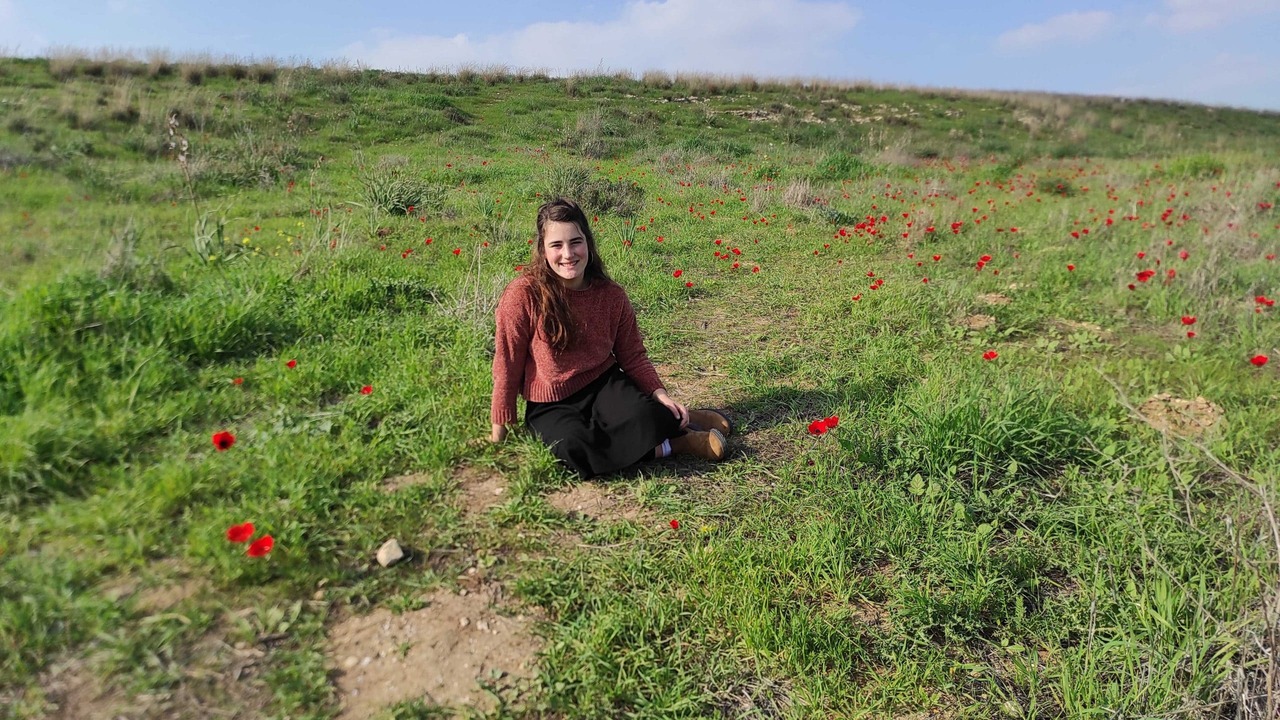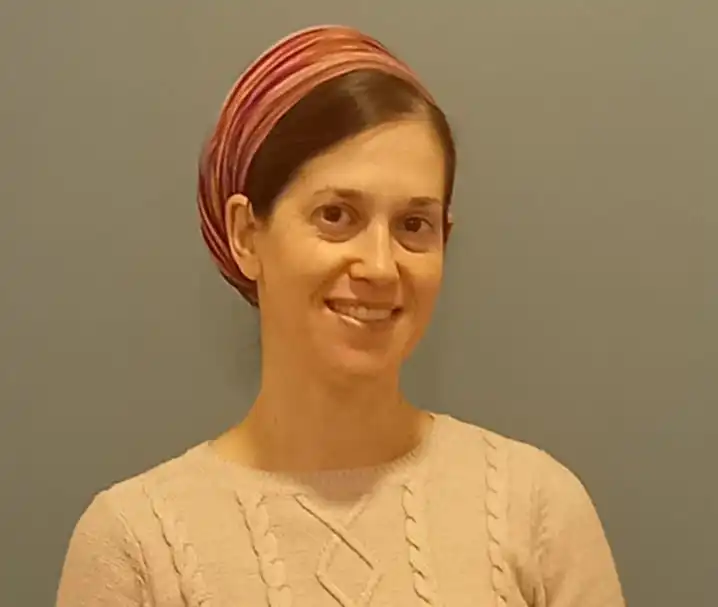שבועות ט
אֶלָּא אַחַת בַּשָּׁנָה.
only once a year.
וּלְרַבִּי יִשְׁמָעֵאל דְּאָמַר אֵין בָּהּ יְדִיעָה בַּתְּחִלָּה וְיֵשׁ בָּהּ יְדִיעָה בַּסּוֹף בַּר קׇרְבָּן הוּא, שָׂעִיר הַנַּעֲשֶׂה בַּחוּץ אַמַּאי מְכַפֵּר? עַל שֶׁאֵין בָּהּ יְדִיעָה לֹא בַּתְּחִלָּה וְלֹא בַּסּוֹף.
According to the mishna, the external goat atones for a case in which there was no awareness at the beginning but there was awareness at the end. The Gemara asks: And according to Rabbi Yishmael, who says: For a case in which one did not have awareness at the beginning but did have awareness at the end, that person is liable to bring an offering, for what does the goat whose blood presentation is performed outside the Sanctuary atone? The Gemara answers: It atones for a case in which one did not have awareness, neither in the beginning, nor in the end.
הַאי שְׂעִירֵי הָרְגָלִים וּשְׂעִירֵי רָאשֵׁי חֳדָשִׁים מְכַפְּרִין! סָבַר לַהּ כְּרַבִּי מֵאִיר, דְּאָמַר: כׇּל הַשְּׂעִירִים כַּפָּרָתָן שָׁוָה – עַל טוּמְאַת מִקְדָּשׁ וְקָדָשָׁיו.
The Gemara challenges this answer: But for that case, the goats of the Festivals and the goats of the New Moons atone. The Gemara explains: He holds in accordance with the opinion of Rabbi Meir, who says: The atonement effected by all the goats offered as part the additional offerings, i.e., those of the New Moons, the Festivals, and Yom Kippur, is the same: They all atone for various cases of the defiling of the Temple or its sacrificial foods.
אֶלָּא לְמַאי הִלְכְתָא אִיתַּקַּשׁ חִיצוֹן לִפְנִימִי? מָה פְּנִימִי אֵינוֹ מְכַפֵּר בִּשְׁאָר עֲבֵירוֹת, אַף חִיצוֹן אֵינוֹ מְכַפֵּר בִּשְׁאָר עֲבֵירוֹת.
The Gemara asks: But if Rabbi Yishmael holds that the internal goat atones for a situation in which there was no awareness at all, with regard to what halakha does the Torah juxtapose the internal goat with the external goat? The Gemara explains: The juxtaposition teaches that just as the internal goat does not atone for other transgressions, so too, the external goat does not atone for other transgressions. Rather, they both atone only for the defiling of the Temple or its sacrificial foods.
עַל שֶׁאֵין בָּהּ יְדִיעָה בַּתְּחִלָּה וְלֹא בַּסּוֹף, שְׂעִירֵי רְגָלִים וּשְׂעִירֵי רָאשֵׁי חֳדָשִׁים מְכַפְּרִין. דִּבְרֵי רַבִּי יְהוּדָה.
§ The mishna teaches: For the defiling of the Temple or its sacrificial foods in which one did not have awareness, neither at the beginning nor at the end, the goats brought as sin-offerings as part of the additional offerings of the Festivals and the goats brought as sin-offerings as part of the additional offerings of the New Moons atone. This is the statement of Rabbi Yehuda.
אָמַר רַב יְהוּדָה אָמַר שְׁמוּאֵל: מַאי טַעְמָא דְּרַבִּי יְהוּדָה? אָמַר קְרָא: ״וּשְׂעִיר עִזִּים אֶחָד לְחַטָּאת לַה׳״ – חֵטְא שֶׁאֵין מַכִּיר בּוֹ אֶלָּא ה׳, יְהֵא שָׂעִיר זֶה מְכַפֵּר.
The Gemara elaborates: Rav Yehuda says that Shmuel says: What is the reasoning of Rabbi Yehuda? The verse states with regard to additional offerings of the New Moons: “And one goat for a sin-offering to the Lord” (Numbers 28:15). The final phrase, which literally means: A sin to the Lord, alludes to the fact that this goat atones for a sin of which only the Lord is aware, i.e., where there was no awareness either at the beginning or at the end.
וְהַאי מִיבְּעֵי לֵיהּ לְכִדְרֵישׁ לָקִישׁ – דְּאָמַר רֵישׁ לָקִישׁ: מָה נִשְׁתַּנָּה שָׂעִיר שֶׁל רֹאשׁ חֹדֶשׁ שֶׁנֶּאֱמַר בּוֹ ״לַה׳״? אָמַר הַקָּדוֹשׁ בָּרוּךְ הוּא: שָׂעִיר זֶה יְהֵא כַּפָּרָה עַל שֶׁמִּיעַטְתִּי אֶת הַיָּרֵחַ.
The Gemara objects: But this phrase is necessary in order to expound it in accordance with the statement of Reish Lakish, as Reish Lakish says: What is different about the goat brought as a sin-offering of the New Moon that it is stated with regard to it: “To the Lord,” a term not written with regard to other sin-offerings? The Holy One, Blessed be He, says, as it were: This goat shall be an atonement for the fact that I diminished the size of the moon.
אִם כֵּן, לֵימָא קְרָא ״עַל ה׳״; מַאי ״לַה׳״? לִכְדַאֲמַרַן.
The Gemara resolves the problem: If so, i.e., if the phrase was needed only for that statement, let the verse state only: A sin-offering for the Lord. For what reason does it state: “To the Lord”? In order to expound it in accordance with that which we have said, that it atones only for a sin that the Lord alone is aware of.
וְאֵימָא כּוּלֵּיהּ לְהָכִי הוּא דַּאֲתָא! אִם כֵּן, נֵימָא קְרָא: ״חַטָּאת ה׳״; מַאי ״לַה׳״? שָׁמְעַתְּ מִינַּהּ תַּרְתֵּי.
The Gemara asks: But why not say that the whole of the phrase comes exclusively to teach this halakha, and not to expound it in accordance with Reish Lakish’s statement at all? The Gemara answers: If so, let the verse state: A sin-offering of the Lord. For what reason does it state: “To the Lord”? You can conclude two conclusions from it.
וּנְכַפַּר נָמֵי אֲפִילּוּ בִּשְׁאָר עֲבֵירוֹת! תָּנָא דְּבֵי רַבִּי יִשְׁמָעֵאל: הוֹאִיל וְזֶה בָּא בִּזְמַן קָבוּעַ וְזֶה בָּא בִּזְמַן קָבוּעַ; מָה זֶה אֵינוֹ מְכַפֵּר אֶלָּא עַל טוּמְאַת מִקְדָּשׁ וְקָדָשָׁיו, אַף זֶה אֵינוֹ מְכַפֵּר אֶלָּא עַל טוּמְאַת מִקְדָּשׁ וְקָדָשָׁיו.
The Gemara asks: But let the goat atone even for other transgressions that a person never became aware of. Why does Rabbi Yehuda limit the scope of its atonement? The Sages of the school of Rabbi Yishmael taught: Since this goat of the New Moon is brought at a fixed time, and that goat of Yom Kippur is brought at a fixed time, they must atone for similar transgressions. Just as that goat of Yom Kippur atones only for the defiling of the Temple or its sacrificial foods, so too, this goat of the New Moon atones only for the defiling of the Temple or its sacrificial foods.
אַשְׁכְּחַן שְׂעִירֵי רָאשֵׁי חֳדָשִׁים, שְׂעִירֵי הָרְגָלִים מְנָלַן? וְכִי תֵּימָא הָא נָמֵי כִּדְתָנָא דְּבֵי רַבִּי יִשְׁמָעֵאל, אִיכָּא לְמִיפְרַךְ: אִי מִדְּרֹאשׁ חֹדֶשׁ – שֶׁכֵּן תָּדִיר, אִי מִדְּיוֹם הַכִּפּוּרִים – שֶׁכֵּן מְרוּבָּה כַּפָּרָתוֹ! וְכִי תֵּימָא
The Gemara says: We found a source teaching that the goats of the New Moons atone for the defiling of the Temple or its sacrificial foods. From where do we derive that the goats of the Festivals also atone for such cases? And if you would say that this can also be derived in accordance with that which the Sages of the school of Rabbi Yishmael taught, that suggestion can be refuted as follows: If you try to derive it through a comparison to the goats of the New Moon, the comparison is flawed, as those goats are more frequent than those of the Festivals. And if you try to derive it through a comparison to the goat of Yom Kippur, that comparison is also flawed, as that goat has a more extensive atonement, since it atones for all sins. And if you would say:
הָא גָּמְרִינַן רֹאשׁ חֹדֶשׁ מִדְּיוֹם הַכִּפּוּרִים וְלָא פָּרְכִינַן; הָתָם – כַּפָּרָה מִיכְתָּב כְּתִיבָא, גַּלּוֹיֵי מִילְּתָא בְּעָלְמָא הוּא; אֲבָל הָכָא – אִיכָּא לְמֵימַר כּוּלַּהּ מִילְּתָא לָא גָּמְרִינַן!
Don’t we derive the atonement of the goat of the New Moon through a comparison to the goat of Yom Kippur and we did not refute it by saying that the atonement of the goat of Yom Kippur is more extensive, that is not relevant: There, with regard to the goat of the New Moon, the basic fact that it provides atonement is written in the verse, as Rav Yehuda explains above, and the comparison to the goat of Yom Kippur is merely revealing a matter, i.e., it teaches in what way its atonement is limited. But here, with regard to the goats of the Festivals, the verse does not mention any details about atonement, so it is valid to say that we do not derive the entire matter from the comparison to the goat of Yom Kippur, as it provides a more extensive atonement.
אֶלָּא כִּדְאָמַר רַבִּי חָמָא בְּרַבִּי חֲנִינָא: ״שְׂעִיר״–״וּשְׂעִיר״; הָכָא נָמֵי ״שְׂעִיר״–״וּשְׂעִיר״, וְאִיתַּקּוּשׁ שְׂעִירֵי רְגָלִים לִשְׂעִירֵי רָאשֵׁי חֳדָשִׁים; מַה שְׂעִירֵי רָאשֵׁי חֳדָשִׁים אֵינָן מְכַפְּרִין אֶלָּא עַל שֶׁאֵין בָּהּ יְדִיעָה לֹא בַּתְּחִלָּה וְלֹא בַּסּוֹף, אַף שְׂעִירֵי הָרְגָלִים אֵינָן מְכַפְּרִין אֶלָּא עַל שֶׁאֵין בָּהּ יְדִיעָה לֹא בַּתְּחִלָּה וְלֹא בַּסּוֹף.
Rather, the atonement of the goats of the Festivals is derived just as Rabbi Ḥama, son of Rabbi Ḥanina, says in explanation of the opinion of Rabbi Meir (10a): The matter is derived from the fact that with regard to the goat of the Festivals (see Numbers, chapters 28–29) the verses that mention the goat could have simply stated: A goat, but instead state: “And a goat.” Here too, the fact that the verse could have simply stated: A goat, but instead states: “And a goat,” indicates that the goats of the Festivals are juxtaposed with the goat of the New Moon, which are mentioned at the beginning of that passage, and teaches that they all effect a similar atonement. Just as the goats of the New Moon atone only for cases in which one did not have awareness, neither at the beginning nor at the end, so too, the goats of the Festivals atone only for cases in which one did not have awareness, neither at the beginning nor at the end.
אִיבַּעְיָא לְהוּ: כִּי אָמַר רַבִּי יְהוּדָה עַל שֶׁאֵין בָּהּ יְדִיעָה לֹא בַּתְּחִלָּה וְלֹא בַּסּוֹף – הָנֵי מִילֵּי בְּחֵטְא שֶׁאֵין סוֹפוֹ לִיוָּדַע, אֲבָל חֵטְא שֶׁסּוֹפוֹ לִיוָּדַע – כְּמִי שֶׁיֵּשׁ יְדִיעָה בַּסּוֹף דָּמֵי, וְשָׂעִיר הַנַּעֲשֶׂה בַּחוּץ וְיוֹם הַכִּפּוּרִים מְכַפֵּר; אוֹ דִלְמָא אֲפִילּוּ חֵטְא שֶׁסּוֹפוֹ לִיוָּדַע – הַשְׁתָּא מִיהָא, חֵטְא שֶׁאֵין מַכִּיר בּוֹ אֶלָּא ה׳ קָרֵינָא בֵּיהּ?
A dilemma was raised before the Sages: When Rabbi Yehuda says that the goats of the New Moons and the Festivals atone for cases in which one did not have awareness, neither at the beginning nor at the end, does that statement apply only to a sin that will never eventually become known, e.g., where no one was present when the person became ritually impure, but with regard to a sin that will eventually become known, it is considered to be like a case of one who has awareness of his sin at the end, and therefore only the goat whose blood presentation is performed outside the Sanctuary and Yom Kippur itself atone for it? Or perhaps, even with regard to a sin that will eventually become known, right now, at least, before it becomes known, I can call it a sin of which only God is aware, and therefore the goats of the New Moons and the Festivals atone for it.
תָּא שְׁמַע, דְּתַנְיָא: עַל שֶׁאֵין בָּהּ יְדִיעָה לֹא בַּתְּחִלָּה וְלֹא בַּסּוֹף, וְחֵטְא שֶׁסּוֹפוֹ לִיוָּדַע – שְׂעִירֵי הָרְגָלִים וּשְׂעִירֵי רָאשֵׁי חֳדָשִׁים מְכַפְּרִים. דִּבְרֵי רַבִּי יְהוּדָה.
The Gemara concludes: Come and hear a resolution of this dilemma, as it is taught in a baraita: For a case in which one did not have awareness, neither at the beginning nor at the end, and it is a sin that will eventually become known, the goats of the Festivals and the goats of the New Moons atone. This is the statement of Rabbi Yehuda.
רַבִּי שִׁמְעוֹן אוֹמֵר: שְׂעִירֵי הָרְגָלִים מְכַפְּרִין, אֲבָל לֹא שְׂעִירֵי רָאשֵׁי חֳדָשִׁים וְכוּ׳.
§ The mishna teaches: Rabbi Shimon says: The goats of the Festivals atone for a case in which one never had awareness of his transgression, but the goats of the New Moons do not. Rather, the latter atone for a ritually pure person who unwittingly partook of ritually impure sacrificial food.
אָמַר רַבִּי אֶלְעָזָר אָמַר רַבִּי אוֹשַׁעְיָא: מַאי טַעְמֵיהּ דְּרַבִּי שִׁמְעוֹן? אָמַר קְרָא: ״וְאֹתָהּ נָתַן לָכֶם לָשֵׂאת אֶת עֲוֹן הָעֵדָה״, וְהַאי קְרָא בְּשָׂעִיר דְּרֹאשׁ חֹדֶשׁ כְּתִיב; וְיָלֵיף ״עָוֹן״–״עָוֹן״ מִצִּיץ – נֶאֱמַר כָּאן ״עֲוֹן״, וְנֶאֱמַר לְהַלָּן ״עֲוֹן״; מָה לְהַלָּן טוּמְאַת בָּשָׂר, אַף כָּאן טוּמְאַת בָּשָׂר.
The Gemara elaborates: Rabbi Elazar says that Rabbi Oshaya says: What is the reasoning of Rabbi Shimon? The verse states: “And He gave it to you to bear the sin of the congregation” (Leviticus 10:17), and this verse is written with regard to the goat of the New Moon. And its capacity to atone is derived from the frontplate through a verbal analogy between the words “sin” in this verse, and the word “sin” stated with regard to the frontplate. The verse there states: “And it shall be on Aaron’s forehead and Aaron will bear the sin of the sacred offerings” (Exodus 28:38). The verbal analogy teaches as follows: It is stated here, with regard to the goat of the New Moon: “Sin,” and it is stated there, with regard to the frontplate: “Sin.” Just as there, in the verse in Exodus, the atonement is for a sin involving the ritual impurity of sacrificial meat, i.e., where such meat is placed on the altar, so too here, in the verse in Leviticus, the atonement is for a sin involving the ritual impurity of sacrificial meat, i.e., where a ritually pure person partakes of it.
אִי מָה לְהַלָּן עוֹלִין, אַף כָּאן עוֹלִין?! ״עֲוֹן הָעֵדָה״ כְּתִיב.
The Gemara asks: If the two cases are to be compared, then one could take the comparison further: Just as there, in the verse in Exodus, the atonement is only for meat that ascends upon the altar, so too here, in the verse in Leviticus, the atonement is only for meat that ascends upon the altar. The Gemara rejects this suggestion: It is written with regard to the goat of the New Moon: “To bear the sin of the congregation.” This indicates that it atones for the personal sin of partaking of sacrificial meat that was to be consumed by an individual, which became ritually impure.
מִכְּדֵי מִיגְמָר גָּמְרִי מֵהֲדָדֵי; נְכַפַּר דְּרֹאשׁ חֹדֶשׁ אַדִּידֵיהּ וְאַדְּצִיץ – נָפְקָא מִינַּהּ לְהֵיכָא דְּנִשְׁבַּר הַצִּיץ! אָמַר קְרָא: ״עֲוֹן״ – עָוֹן אֶחָד הוּא נוֹשֵׂא, וְאֵין נוֹשֵׂא שְׁנֵי עֲוֹנוֹת.
The Gemara suggests: Now, the atonement of the goats of the New Moon and that of the frontplate are derived from one another by a verbal analogy. If so, let the goat of the New Moon atone for itself, i.e., for the cases that it normally atones for, and for that which the frontplate normally atones for, and the practical difference will be in a case where the frontplate was broken. The Gemara answers: The verse states with regard to the goat of the New Moon: “To bear the sin of the congregation,” which indicates that it bears, i.e., atones for, only one sin, but it does not bear two sins.
וּנְכַפַּר צִיץ אַדִּידֵיהּ וְאַדְּרֹאשׁ חֹדֶשׁ – נָפְקָא מִינַּהּ לְטוּמְאָה דְּאֵירְעָה בֵּין זֶה לְזֶה! אָמַר קְרָא: ״אוֹתָהּ״ – אוֹתָהּ נוֹשֵׂא עָוֹן, וְאֵין אַחֶרֶת נוֹשֵׂא עָוֹן.
The Gemara suggests: But let the frontplate atone for itself, i.e., for those cases that it normally atones for, and for that which the goats of the New Moon normally atone for, and the practical difference will be in a case of the defiling of the Temple or its sacrificial foods that occurred between the goat offering of this New Moon and that New Moon which follows. The Gemara answers: The verse states with regard to the goat of the New Moon: “And He gave it to you to bear the sin of the congregation,” which indicates that it bears, i.e., atones for, that sin, but another does not bear that sin.
רַב אָשֵׁי אָמַר: כְּתִיב הָכָא ״עֲוֹן הָעֵדָה״ – עֵדָה וְלֹא קָדָשִׁים, וְהָתָם כְּתִיב ״עֲוֹן הַקֳּדָשִׁים״ – קָדָשִׁים וְלֹא עֵדָה.
Rav Ashi states another proof for the opinion that each atones in a different case: It is stated here with regard to the goat of the New Moon: “The sin of the congregation,” which indicates that it atones for the sin of the congregation, but not for the sin involving sacred offerings. And there, with regard to the frontplate, it is written: “The sin of the sacred offerings,” which indicates that it atones for the sin involving sacred offerings, but not for the sin of the congregation.
אַשְׁכְּחַן שְׂעִירֵי רָאשֵׁי חֳדָשִׁים דִּמְכַפְּרִי עַל טָהוֹר שֶׁאָכַל אֶת הַטָּמֵא; שְׂעִירֵי רְגָלִים דִּמְכַפְּרִי עַל שֶׁאֵין בָּהּ יְדִיעָה לֹא בַּתְּחִלָּה וְלֹא בַּסּוֹף – מְנָלַן?
The Gemara says: We found a source for Rabbi Shimon’s opinion about the goats of the New Moons, that they atone for a ritually pure person who partook of ritually impure sacrificial food. From where do we derive his opinion about the goats of the Festivals, that they atone for cases of the defiling of the Temple or its sacrificial foods in which one did not have awareness, neither at the beginning nor at the end?
כִּדְאָמַר רַבִּי חָמָא בְּרַבִּי חֲנִינָא: ״שְׂעִיר״–״וּשְׂעִיר״, הָכָא נָמֵי ״שְׂעִיר״–״וּשְׂעִיר״,
The Gemara answers: It is derived just as Rabbi Ḥama, son of Rabbi Ḥanina, says, in explanation of the opinion of Rabbi Meir (10a): The fact that with regard to the goat of the Festivals the verses that mention the goats could have simply stated: A goat, but instead state: “And a goat,” teaches that the goats of the Festivals effect an atonement similar to that of the goat of the New Moon that is mentioned at the beginning of that passage. Here too, the fact that the verse could have simply stated: A goat, but instead states: “And a goat,” teaches that the goats of the Festivals effect an atonement similar to that of the goat of the New Moon, which is mentioned at the beginning of that passage.


















